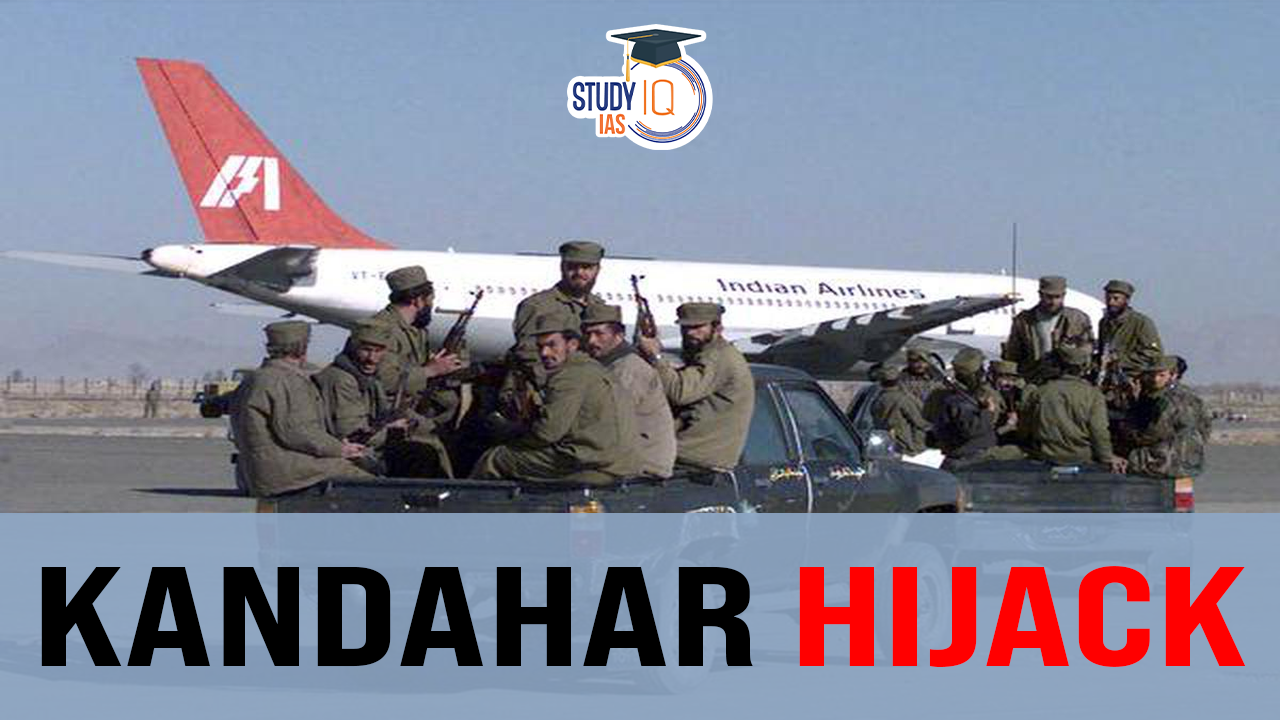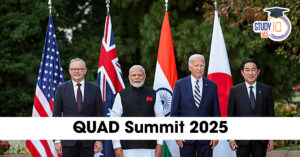Table of Contents
The IC-814 Kandahar hijack remains one of the most notorious incidents in India’s aviation history. It occurred on December 24, 1999, when Indian Airlines Flight IC-814 was hijacked by terrorists, leading to a week-long diplomatic crisis involving India, Pakistan, and the Taliban-controlled Afghanistan. This hijacking left an indelible mark on India’s counter-terrorism policy and continues to be a significant case study for civil aviation security.
What Was the IC-814 Kandahar Hijack?
The IC-814 hijacking refers to the seizure of an Indian Airlines Airbus A300 by five armed militants while en route from Kathmandu, Nepal, to New Delhi, India. The hijackers diverted the plane to Kandahar, Afghanistan, which was then under Taliban control. The week-long ordeal ended with the release of three high-profile terrorists in exchange for the safety of 176 hostages.
Timeline of the Kandahar Hijack Incident
| Date | Event |
|---|---|
| December 24, 1999 | Indian Airlines Flight IC-814 is hijacked shortly after takeoff from Kathmandu, Nepal. |
| 4:39 PM IST | Hijackers take control of the plane and attempt to divert it to Lahore, Pakistan. |
| 7:00 PM IST | Plane lands in Amritsar for refueling but departs due to delays and miscommunication. |
| 8:01 PM IST | The flight lands in Lahore, Pakistan, where it refuels before heading to Dubai. |
| December 25, 1999 | 27 passengers are released in Dubai, but one passenger, Rupin Katyal, is killed. |
| December 25, 1999 | The plane finally lands in Kandahar, Afghanistan, under Taliban control. |
| December 31, 1999 | The Indian government agrees to release three terrorists in exchange for hostages. |
| January 1, 2000 | Hostages are freed and return to India; the crisis ends. |
Causes of the Kandahar Hijack
- Release of Terrorists: The hijackers’ primary objective was to secure the release of terrorists, including Maulana Masood Azhar, who was imprisoned in India.
- Pakistani ISI’s Support: The hijackers were reportedly backed by Pakistan’s intelligence agency, the ISI, which has been accused of supporting militant groups targeting India.
- Inadequate Aviation Security: Lax security at Kathmandu’s Tribhuvan International Airport allowed the hijackers to smuggle weapons on board, exploiting vulnerabilities in international aviation.
Diplomatic Challenges for India
The hijacking presented India with several diplomatic challenges:
- Dealing with the Taliban: Negotiating with the Taliban, a non-recognized government known for its extremist ideology, was complex for India.
- Strained Relations with Pakistan: The involvement of Pakistan-based militants in the hijack further strained diplomatic relations between India and Pakistan.
- Global Isolation: India faced difficulties in mobilizing strong international pressure against the Taliban, as many countries did not have diplomatic leverage over Afghanistan at the time.
Steps Taken by Government
- Crisis Management Group: The Indian government formed a Crisis Management Group (CMG) to oversee the negotiations and explore military options.
- Diplomatic Negotiations: India engaged in lengthy negotiations with both the Taliban and the hijackers, eventually securing the release of the hostages by agreeing to free three militants.
- Controversial Release of Terrorists: The government made the controversial decision to release Maulana Masood Azhar, Mushtaq Ahmed Zargar, and Ahmed Omar Saeed Sheikh in exchange for the passengers’ lives.
Background of the IC-814 Hijack
The hijacking was orchestrated by Harkat-ul-Mujahideen, a Pakistan-based Islamist militant group. Their aim was to force India into releasing imprisoned terrorists, who were key figures in the insurgency against Indian interests in Kashmir.
Profile of the Hijackers
The five hijackers were members of Harkat-ul-Mujahideen, and their identities were:
- Ibrahim Athar (leader)
- Shakir
- Sunny Ahmed Qazi
- Shahid Akhtar Sayed
- Mistri Zahoor Ibrahim
Role of Harkat-ul-Mujahideen in the Kandahar Hijack
Harkat-ul-Mujahideen, with ties to Pakistan’s ISI, had a history of militant activity, particularly in Jammu and Kashmir. The hijacking was part of a broader strategy to weaken India’s internal security and exert pressure through terror tactics.
Geopolitical Context in South Asia During the Hijacking
The hijacking took place at a time of heightened tensions between India and Pakistan, following the Kargil War earlier in 1999. South Asia was a hotbed of extremist activity, with militant groups receiving support from Pakistani intelligence agencies to further their operations in Kashmir.
Taliban’s Control Over Kandahar and Its Impact on Negotiations
Kandahar, under the Taliban’s control, became the focal point of the crisis. The Taliban acted as intermediaries between India and the hijackers, leading to complex negotiations. India had no formal diplomatic ties with the Taliban, complicating efforts to resolve the situation peacefully.
International Response to the IC-814 Hijack
The international community condemned the hijacking, but there was little direct intervention. The U.S., Britain, and other global powers expressed solidarity with India but were reluctant to engage with the Taliban directly.
India’s Counter-Terrorism Policy: Pre- and Post-Hijack
The IC-814 incident exposed flaws in India’s counter-terrorism policy. Before the hijack, there was inadequate coordination between intelligence agencies and security forces. Post-hijack, India strengthened aviation security, improved intelligence sharing, and revamped its counter-terrorism policies to prevent future incidents.
Release of Terrorists: A Controversial Decision
The decision to release three terrorists in exchange for the hostages was met with criticism both domestically and internationally. The released terrorists, particularly Masood Azhar, went on to play significant roles in future terrorist activities, including the 2001 Parliament attack and the 2019 Pulwama attack.
Consequences of the Hijack on India-Pakistan Relations
The hijacking deepened the already strained relations between India and Pakistan. India accused Pakistan of harboring and supporting terrorist groups, while Pakistan denied any involvement. The incident further complicated diplomatic efforts to resolve the Kashmir conflict and led to increased tensions along the India-Pakistan border.
Current Relevance and Web Series
The IC-814 hijack remains a topic of significant interest, with its relevance revived in contemporary discussions about terrorism, aviation security, and diplomacy. Recently, a web series has been announced, which will dramatize the events of the hijacking, providing a detailed portrayal of the incident and the people involved. The series has sparked debate about its portrayal of sensitive national security issues and has renewed interest in the diplomatic challenges faced by India during the crisis.
Lessons from the IC-814 Hijacking
- Enhanced Security Protocols: India implemented stricter security measures at airports and onboard flights, including the introduction of sky marshals and enhanced passenger screening procedures.
- Stronger Diplomatic Ties: The hijacking underscored the need for stronger diplomatic relationships with neighboring countries to manage crises more effectively.
- Counter-Terrorism Initiatives: India has since focused on strengthening its counter-terrorism infrastructure, ensuring better coordination between intelligence agencies, military, and diplomatic channels.
Impact on Public Memory and Politics
The IC-814 hijacking continues to shape public memory and discourse in India, particularly in the context of national security and counter-terrorism policies. The incident also played a role in shaping domestic politics, with the government facing criticism for its handling of the crisis. The upcoming web series is likely to reignite these discussions and offer a fresh perspective on the incident for new generations.
Conclusion
The IC-814 Kandahar hijacking was a watershed moment in India’s counter-terrorism history. Its far-reaching impact on India’s security framework, diplomatic strategies, and counter-terrorism policies cannot be understated. The incident remains relevant today, as lessons learned continue to influence India’s approach to tackling terrorism and managing international crises.


 SSC MTS Salary 2025, Check Highest Salar...
SSC MTS Salary 2025, Check Highest Salar...
 F-35 Fighter Jet Stranded in Kerala: Dis...
F-35 Fighter Jet Stranded in Kerala: Dis...
 Quad Summit 2025: Key Announcements, Str...
Quad Summit 2025: Key Announcements, Str...





















